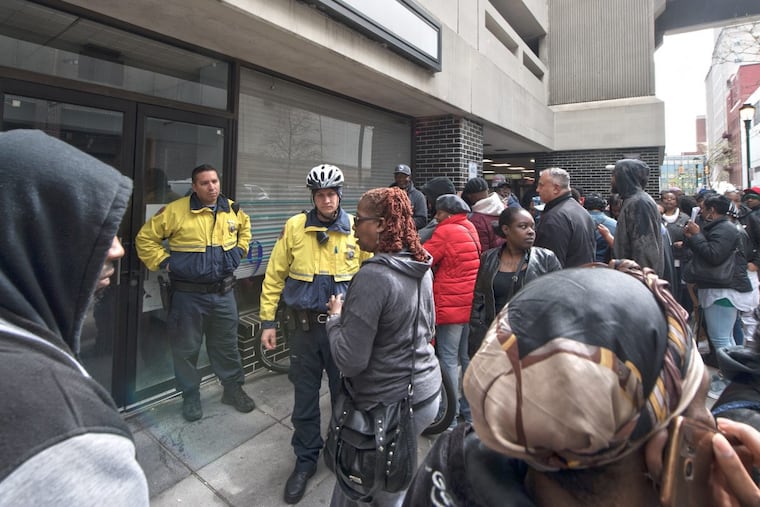PPA promises shorter waits, better customer service when paying parking tickets
The changes could cut the time people wait to resolve violations in half.

Visitors to the Philadelphia Parking Authority’s offices at Ninth and Filbert Streets face a deep dive into long lines, interminable waits, and a bureaucratic labyrinth, all endured with the promise of walking out with less money than they had when they went in.
The PPA isn’t going to make those visits to pay a ticket, remove a boot, or retrieve a towed car any cheaper, but officials there say they are working to make the process faster and less complicated. By next year, officials said, changes in both procedures and the physical space at 913 Filbert St., the PPA’s Bureau of Administrative Adjudication, will streamline how parking violations are resolved.
“Our change will run a faster process, less wait time, and all our services in one convenient location,” said Clarena Tolson, a PPA deputy executive director.
The agency is designing an expansion for the Filbert Street facility from 9,000 to 14,000 square feet and is digitizing the processes that currently can bounce people trying to pay violations from room to room (and even to different buildings) for hours.
A new process for managing violations could be in place by October, Tolson said, and the building renovations could be complete by June 2020.
The current process to resolve a boot on a car, for example, is convoluted:
People arriving at 913 Filbert St. go to one side of the building to find out what tickets they owe. They may then be sent to a building on Eighth Street, if the boot resulted in the state’s suspending the person’s registration. After getting the registration reactivated, the person must then go back to 913 Filbert either to contest the tickets with a hearing officer, arrange a payment plan, or pay for the violations outright and get the boot removed. Paperwork has to be carried from one window to another. Every step requires waiting in long lines, Tolson said, and having loud, public conversations with staff through thick barriers that make it hard for workers and visitors to hear each other. The process can take hours.
“It’s frustrating,” Tolson said. “It’s not intended to be a punishment to have to go through a customer service process.”
When the new system is in place, she said, the facility’s 15,000 visitors a month will immediately register at kiosks that will give them an idea how long the first-come-first-serve wait will be, what they owe, and offer an opportunity to schedule an appointment for later in the day. The first interaction with a person will be at a seat across a table from someone. There will still be a protective barrier, but microphones and speakers should make it easier to converse. Eliminating the current paperwork used by the PPA will allow getting information on tickets, resolving a suspended registration, and arranging a payment plan to be handled by this one person, Tolson said. Payments will then be made at a cashier’s window.
>>READ MORE: PPA passes new budget amid protests over School District funding
The new process should halve the time it will take to resolve violations, Tolson said.
Violations from red light cameras and speed cameras, if City Council approves their use, also will be handled in the same office.
The PPA took some inspiration for the changes from an amnesty program it offered last year, which proceeded without any major problems despite long lines of people seeking to resolve unpaid violations.
The agency changed the contractor that manages the parking violation system in April from Conduent to Duncan Solutions, a Milwaukee-based company that specializes in parking management, with a $22 million, seven-year contract. The contract with Duncan will cost the PPA $3.5 million in the first year.
The agency will run the new digital process concurrently with its current paperwork-heavy approach through October to work out any kinks in the software, Tolson said.
>>READ MORE: Was Philly’s parking amnesty program worth it?
The city also has hired two new hearing officers, Tolson said, which will bring the number at the Filbert Street office up to 16.
The design for the office is expected to be completed in the next month, Tolson said, and the bidding process for the construction work will likely begin weeks later.
“At all points we want people to feel they’re being treated differently, that they’re being heard,” Tolson said, “that they’re handling their business affairs in a professional environment.”